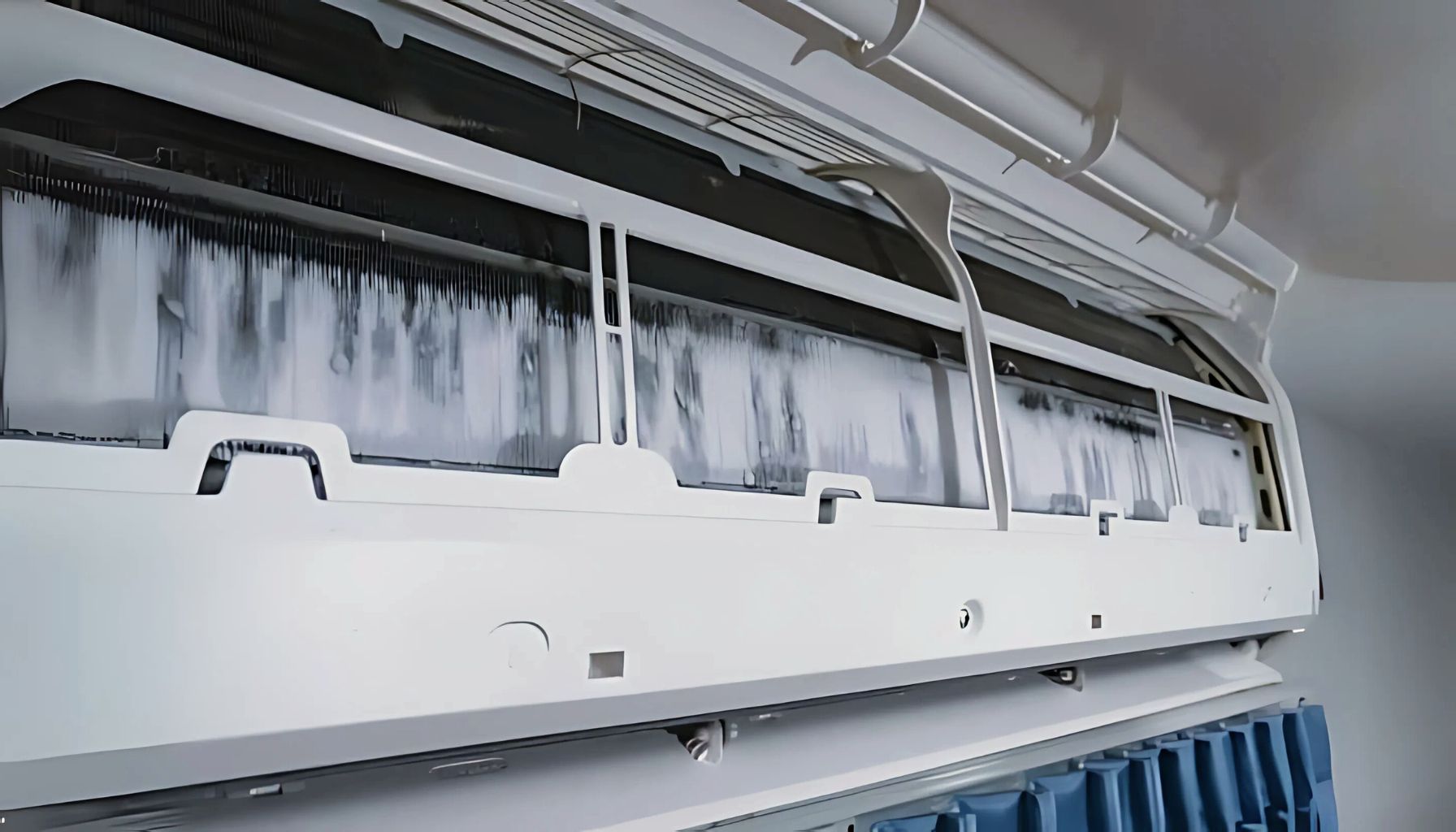Ice on the AC Unit Inside | 7 Critical Reasons
Air conditioners are crucial for indoor comfort, particularly in the summer. However, the presence of ice on your home’s air conditioner indicates that something is awry. If this problem is not remedied, it could lead to expensive repairs or perhaps a system failure. To ensure that your air conditioner operates well, you must understand why this happens and how to fix it.
Table of Contents
What Causes Ice on the AC Unit Inside?
1. Restricted Airflow
One of the most common causes of ice in the air conditioner is airflow restriction. When warm air cannot circulate properly, the system’s evaporator coil can freeze. Several factors can restrict airflow:
- Dirty Air Filters: Blocked filters limit airflow and force the AC to work harder than necessary.
- Blocked Vents: Furniture or debris covering vents can reduce air circulation.
- Poor airflow might be caused by a malfunctioning or damaged fan.
2. Low Refrigerant Levels
Low refrigerant levels are another important element in ice formation. When there is insufficient refrigerant in the system, the pressure drops, causing the evaporator coil to become extremely cold and freeze over. This problem is usually triggered by a system leak.
3. Dirty evaporator coil
A dirty evaporator coil cannot absorb heat efficiently, resulting in an accumulation of ice on the AC unit inside. Dust and grime accumulate over time, forming insulation that impedes heat transfer.
4. Thermostat issues
A faulty thermostat might cause the system to operate excessively or fail to shut down when necessary, resulting in overcooling and ice development. Incorrect temperature settings may also lead to this issue.
5. Insufficient maintenance
Neglecting routine AC maintenance increases the chance of problems, such as ice accumulation. Routine cleaning and inspections can help keep minor issues under control.
6. Faulty blower motor
The blower motor sends air across the evaporator coils. A malfunctioning motor restricts airflow, allowing the coil to freeze.
7. Excess Humidity Levels
High levels of interior humidity might cause ice to build on the air conditioning unit inside. Excess moisture in the air may condense and freeze on the evaporator coils.
Signs of Ice on the AC Unit Inside
Recognizing danger signs early can save you money on repairs.
Ice on the evaporator coils and other parts.
- Reduced cooling efficiency.
- Warm air emerges from the vents.
- Strange hissing and bubbling sounds.
- As ice melts, water pools around the indoor unit.
How to Fix Ice on the AC Unit Inside
Step 1: Turn the system off
The first step is to turn off the air conditioner to prevent further damage. Running the system with ice buildup may put stress on the compressor and other components.
Step 2: Check the air filter
Check the air filter for dirt and debris. Replace as needed to maintain adequate airflow.
Step 3: Examine the Evaporator Coil
If you are confident, inspect the evaporator coil for ice or dirt. Use a brush or towel to lightly clean it.
Step 4: Inspect for refrigerant leaks
Low refrigerant levels usually signal a leak. Consult an experienced HVAC technician to assist diagnose and resolve the issue.
Step 5: Check the thermostat settings
Check that the thermostat is set to the correct temperature and functions properly. Any defective thermostats should be replaced immediately.
Preventing Ice on the Air Conditioning Unit Inside
1. Schedule regular maintenance
Routine maintenance is essential for maintaining your air conditioner in peak condition. Plan at least one professional checkup every year.
2. Replace your air filters on a regular basis
Unclean filters are one of the easiest issues to resolve. Filters should be replaced every 1-3 months, depending on their use.
3. Monitor the refrigerant levels
Low refrigerant is a severe problem. Get your system evaluated on a regular basis to ensure proper levels and spot leaks early.
4. Maintain Proper Ventilation
Make sure vents are clear and that no furniture is blocking ventilation. Good ventilation enables the system to function smoothly.
5. Use a dehumidifier.
Excess humidity might exacerbate AC problems. Use a dehumidifier to maintain interior humidity levels between 30 and 50%.
6. Address issues quickly
Don’t dismiss early warning signs. Addressing problems as soon as they develop will help you save money on future repairs.
When to Call a Professional
While some maintenance tasks can be DIY, others require professional expertise. Call an HVAC technician if:
- Ice continues to form after basic troubleshooting
- Refrigerant levels are low
- The system makes unusual noises
- Performance doesn’t improve after cleaning
Conclusion
Ice on the AC unit inside is more than just a nuisance; it suggests underlying issues that demand immediate attention. Understanding the causes, symptoms, and treatments will help you avoid serious problems and keep your air conditioner functioning efficiently. Regular maintenance, prompt repairs, and proper system care are your strongest defenses against this problem.
FAQs
Q1. What should I do if I see ice on my AC unit inside?
Turn off the system immediately and check the air filter. If the issue persists, call a professional HVAC technician.
Q2. How often should I replace my AC’s air filter?
Replace the air filter every 1-3 months, depending on usage and indoor air quality.
Q3. Can low refrigerant levels cause ice on the AC unit inside?
Yes, low refrigerant levels reduce system pressure, leading to freezing on the evaporator coil.
Q4. Is it normal for an AC to form ice in high humidity?
No, while high humidity can contribute to ice formation, it’s usually a sign of other underlying issues.
Q5. How can I prevent ice on the AC unit inside?
Regular maintenance, clean air filters, proper refrigerant levels, and adequate ventilation can help prevent ice buildup.
Do you have questions, or are you ready to start your next project? Explore our services at AiRCO Mechanical!

